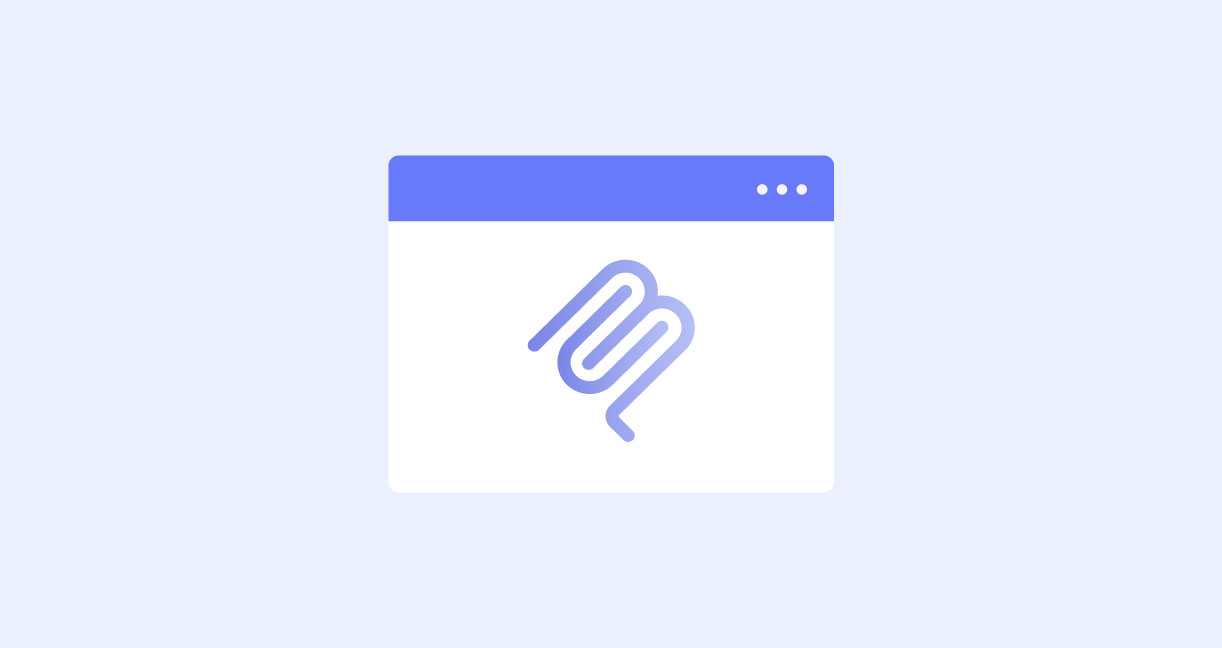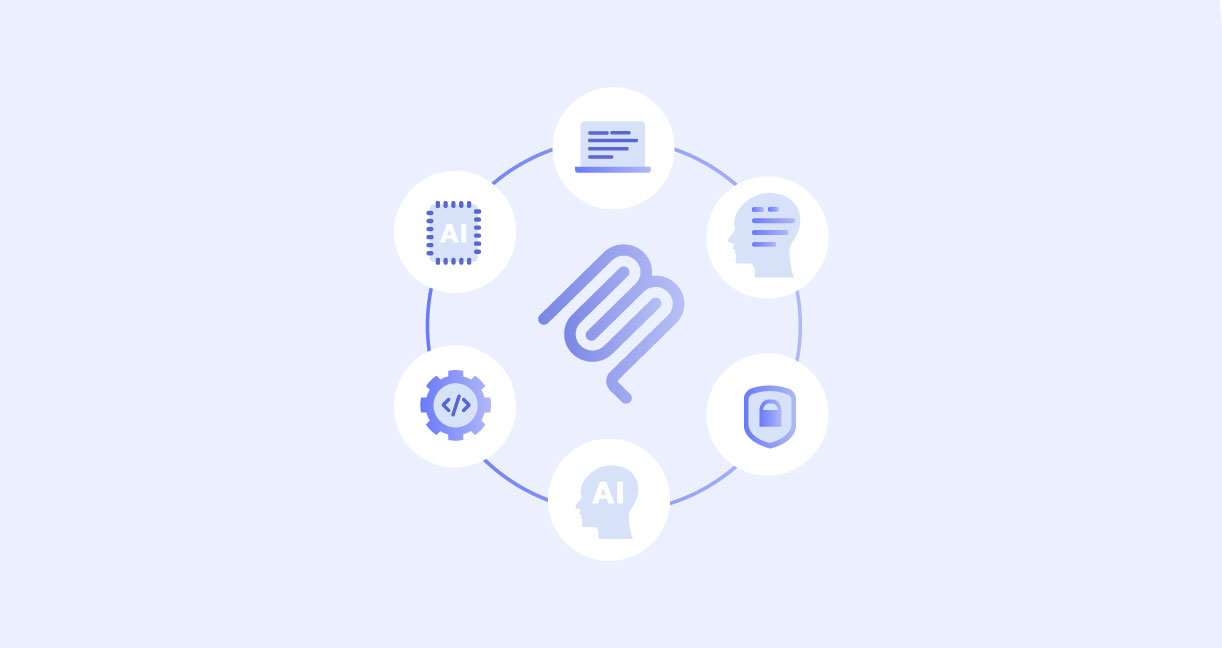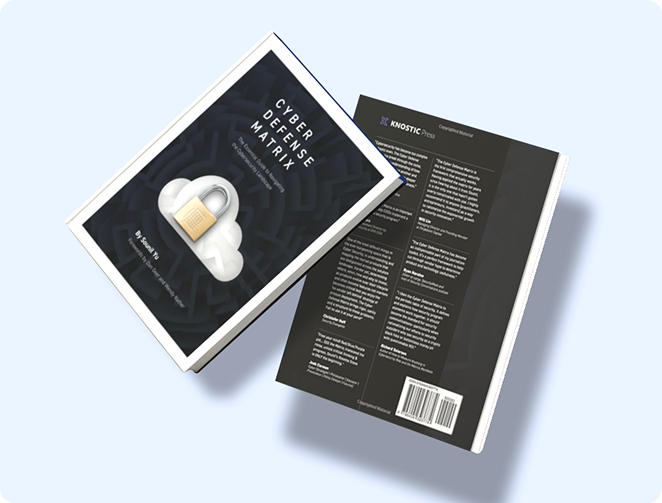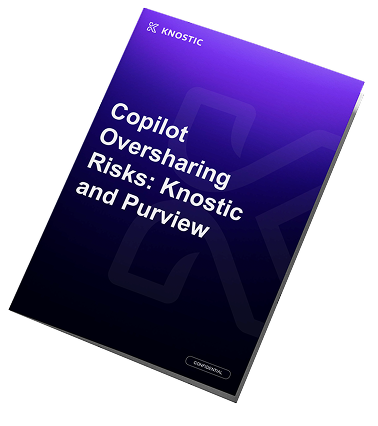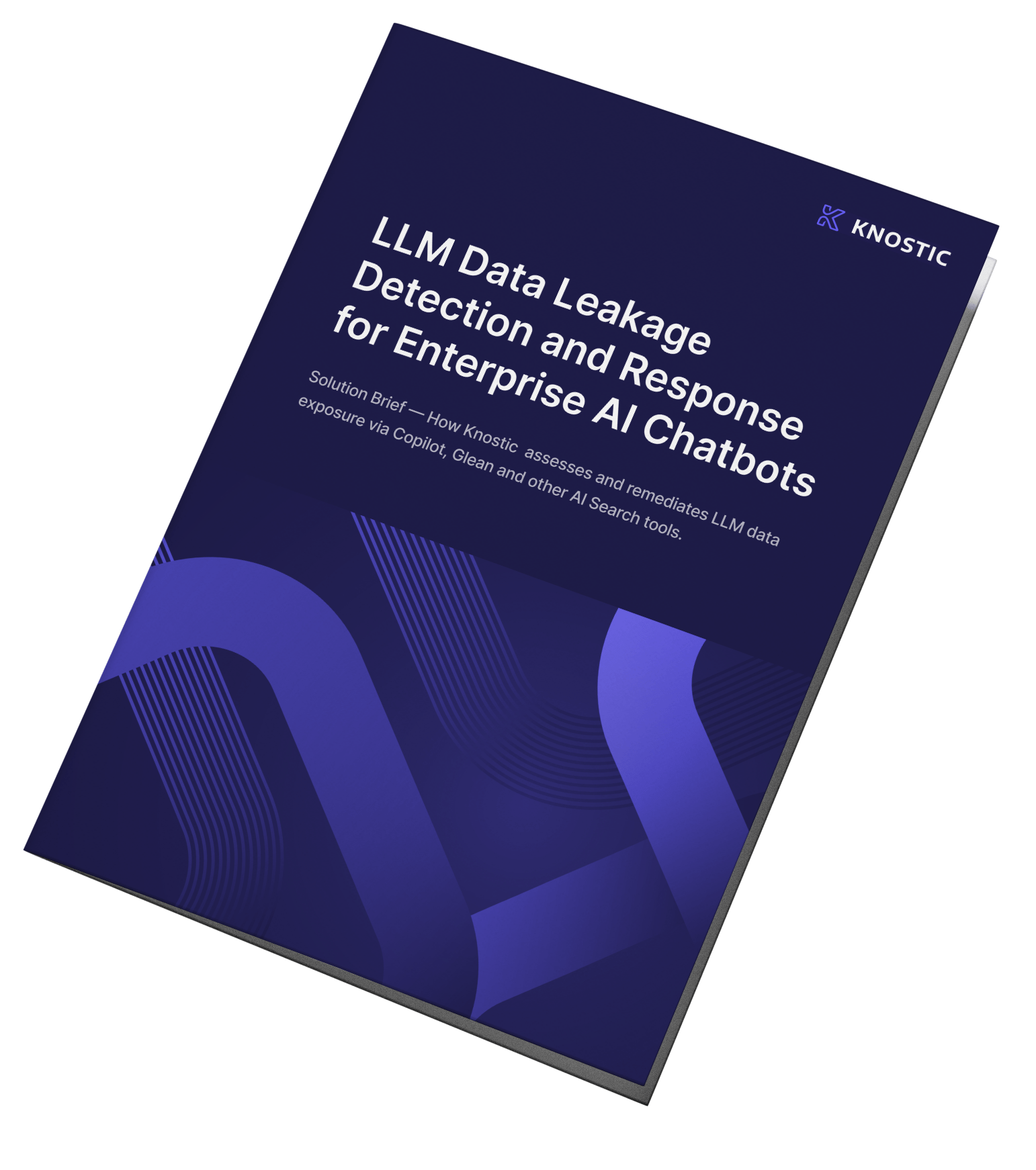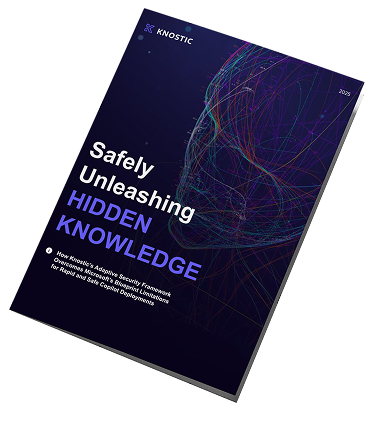Key Findings about the Benefits of Attribute-Based Access Control
-
Attribute-based access controls (ABAC) use dynamic attributes to grant or deny access by evaluating user, action, resource, and environmental context for every request, unlike role-based access controls (RBAC) which use static roles.
-
It enforces true least privilege by adapting to device status, location, session risk, and purpose, ensuring access aligns with business intent and real-time conditions.
-
ABAC works well in hybrid environments by layering on top of RBAC, avoiding role sprawl and simplifying administration with reusable attribute templates.
-
Security and compliance improve measurably with built-in explainability, audit logs, and alignment with standards like GDPR, NIST, and the EU AI Act.
-
AI workflows gain precision and protection as ABAC filters prompts, retrievals, and outputs to prevent oversharing, prompt injection, and unsafe tool use while preserving performance and usability.
Why ABAC Beats Static Roles
Modern teams want security that adapts. The benefits of attribute-based access control start with real-time context and purpose. Roles alone cannot accurately reflect device posture, geographic location, session risk, or intent. ABAC evaluates each request with fresh attributes and narrows access accordingly. Decisions stay consistent because policies are explicit and machine-readable. For example, a policy might state in clear logic:
-
IF user.department = Finance
-
AND device.compliance = True
-
AND data.sensitivity = Confidential
-
THEN grant read-only access.
Such machine-readable syntax enables systems to automatically enforce, audit, and adjust permissions without manual review.
Context-Aware Least Privilege
ABAC evaluates user, resource, action, and environment attributes for every request. The model can allow reading from a managed laptop but block exporting from an unmanaged device. Location, time, and session risk further tighten access without stopping work. Policies can also require justification or step-up authentication for sensitive actions. This approach turns least privilege from a slogan into a daily practice. The National Institute of Standards and Technology (NIST) Generative Artificial Intelligence Profile emphasizes the importance of contextual controls and clear decision records for AI use cases.
Purpose Limitation
Authorization should reflect business intent, not only capability. ABAC goes beyond “can access” to consider “should access,” factoring in the user’s purpose, persona, and task context for each decision. AI assistants benefit because the system can redact or refuse access when the stated purpose does not align with policy. The same logic constrains enterprise search so sensitive sources never reach the prompt. Knostic’s AI monitoring explains how purpose-aware checks reduce unwanted exposure before answers appear.
Hybrid Friendly
No rip-and-replace is required. Keep RBAC for simple app entitlements and layer ABAC where fine-grained control is needed. This hybrid pattern prevents role sprawl and reduces administrative burden. Attribute templates handle edge cases without requiring role cloning.
Security Benefits You Can Measure
Risk decreases when controls are in place before harm occurs. ABAC filters prompts, retrieval, tools, and outputs using labels and personas. The model prevents disallowed sources from entering the context and masks sensitive strings during the response. While no access model alone eliminates breaches, ABAC aligns with risk management and access governance controls cited in major industry reports.
Stops Oversharing in AI Answers
Large language models (LLMs) assemble responses from prompts, retrieved chunks, and tool outputs. ABAC checks each step and blocks content that violates sensitivity, residency, or ownership rules. Redaction preserves workflow while removing risky details. Deny events carry reasons so teams can tune policies with evidence. This reduces leakage and makes outcomes predictable under pressure. Knostic’s knowledge security platform shows how answer-time controls fit into live systems.
Containment for Prompt/Indirect Injection
Prompt injection aims to override safeguards or call dangerous tools. ABAC limits the blast radius by binding tools to attributes such as purpose, time, and persona. Disallowed question classes receive a “do not answer” decision, accompanied by an audit trail. Even if a prompt is manipulated, the assistant cannot access restricted data or actions. The ENISA Threat Landscape 2024 and the NIST GenAI Profile both call for controls that resist prompt manipulation and tool abuse.
Secret/PII Protection
Policies associate masking and redaction with labels such as “confidential,” “regulated,” or “export-restricted.” Context, such as device risk or cross-border transfer, can trigger stronger obligations. Read access may be allowed while copy or download is blocked. Just-in-time elevation can require business justification for exceptional cases. This approach protects sensitive data while keeping users productive and efficient.
KPI Ideas
Track the leakage rate across AI answers and ensure it trends down after policy rollout. Monitor blocked or redacted outputs and link them to incidents that were avoided. Count jailbreak detections and correlate them with denied tool calls. Measure provenance coverage so every answer cites approved sources. Watch the p95 policy evaluation latency to protect the user experience.
Compliance and Audit Benefits
ABAC unifies explainability, standards alignment, audit readiness, and key performance indicator (KPI) tracking into a single operating loop, making AI decisions traceable, compliant, and continuously improving.
Built-In Explainability
Auditors need proof, not intent. ABAC produces explainable “allow/deny” outcomes with the exact policy and attributes used. Decision logs form tamper-evident evidence for Data Protection Impact Assessments (DPIAs) and post-incident reviews. Controls map cleanly to modern frameworks and sector rules. Faster evidence production shortens audits and reduces the number of findings. Every authorization returns a reason. The record includes the policy identifier, attribute snapshot, and timestamp. Reviewers can see what changes were made when the context changed. Investigations move faster because evidence is structured and searchable. NIST’s Generative AI Profile explicitly emphasizes the importance of transparent, testable controls and documentation for AI operations.
Standards Alignment
ABAC supports the EU AI Act’s risk-based obligations by enforcing policies at the point of use and by keeping logs suitable for conformity checks. ISO/IEC 42001, the first international standard for an AI management system (AIMS), requires organizations to implement an AI management system with measurable controls and ongoing improvement. NIST’s profile links governance tasks to concrete actions that teams can implement. Privacy programs under the EU’s General Data Protection Regulation (GDPR) and sector-specific rules, such as HIPAA, benefit from data minimization and purpose limitation in policy. Together, these frameworks reward explainable, attribute-driven enforcement.
Faster Audits
Well-structured decision logs reduce time spent on sampling and reconstruction. Lineage helps trace each answer back to approved sources and labels. DPIA documentation reuses these records instead of manual screenshots. Findings close sooner because the evidence is consistent across teams.
KPI Ideas
Count DPIAs completed per quarter and target steady improvement. Track audit findings as they are closed within service-level windows. Measure the percentage of AI answers covered by decision logs and provenance. Record the mean time to compile audit evidence from the security information and event management (SIEM) or data lake tools. Measure the trend in exception reduction after ABAC goes live.
Operational Benefits for Scale
Standardized enforcement and automated evidence keep overhead low, latency predictable, and auditability intact as AI adoption expands.
Fewer Roles, Less Admin
Growing organizations need controls that scale with change. ABAC reduces manual work by design. Policies reuse attributes instead of duplicating roles. Reviews are completed more quickly because conditions are clear and testable. Latency remains low when enforcement is located near the workload. ABAC replaces dozens of near-duplicate roles with reusable attribute conditions. Admins manage a small set of templates instead of many static lists. Exceptions shrink because attributes express details cleanly. Teams spend time improving policy quality, not cloning roles. See the overview in Knostic’s ABAC examples for AI assistants.
Lower Change Friction
Reorganizations happen often. Attributes absorb team moves, titles, and project changes without new roles. Contractor onboarding becomes a simple attribute switch with time bounds. Geo moves update automatically when a location attribute changes. Security stays aligned with the org chart with minimal effort. A phased plan is outlined in RBAC vs. ABAC.
Performance Aware
High performance needs clever placement of checks. Localized policy enforcement points live next to prompts, retrieval, and outputs. A central decision service returns cacheable results with short time to live (TTL) values. Requests are directed to warm caches during bursts to minimize lag. Users enjoy a seamless experience while policies remain strict.
KPI Ideas
Track total role count and aim for a steady reduction each quarter. Measure p95 policy evaluation latency for prompts and outputs. Watch access review completion time for key teams. Count policy changes made without creating new roles. Monitor incidents tied to misaligned roles after the ABAC rollout.
Benefits for AI Assistants, RAG, and Agents
Need-to-know enforcement at answer time makes assistants, retrieval-augmented generation (RAG), and agents safer, reduces oversharing, and speeds approvals without slowing workflows.
Retrieval Precision with Policy
AI workflows magnify both value and risk. ABAC adds guardrails at retrieval, tool use, and answer time. Disallowed sources never reach the context window. Tools run only with purpose-bound permissions and clear time limits. Coding assistants follow repository and license rules before suggesting code. RAG quality depends on source control. Label-aware and access control list (ACL)-aware queries exclude forbidden repositories at query time. Sensitive or unverified stores are excluded from the retriever scope. Provenance remains clean because only permitted chunks are allowed to enter the prompt. Reviewers can trace each answer to approved content. This is a core ABAC benefit for enterprise AI search.
Scoped Agent Tools
Agents should act only within a defined purpose. ABAC ties tool permissions to persona, task, and time window. Risky actions, such as file export or permission elevation, require stronger conditions. Idle permissions expire automatically after the job ends. Attack surface and accidental misuse both shrink. Evidence of denials appears in the decision log for review.
Safer Coding Assistants
Source code deserves precise rules. Allow-lists restrict repositories by sensitivity and license. Export and copy actions require purpose and justification. Generated code must pass license-aware checks before insertion. Secrets and keys are redacted at the time of answering. Developers get help without leaking intellectual property.
KPI Ideas
Measure provenance coverage across assistant answers. Track unsafe action denials and correlate them with the number of avoided incidents. Record rollback rate for agent actions after policy changes. Monitor blocked code exports and policy-driven redactions. Review the mean time to approve safe tool access for new tasks.
Business and UX Benefits
ABAC at the knowledge layer turns guardrails into growth. This means safer approvals, smoother interactions, and built-in proof that sustains trust at scale.
Approve More Use Cases Safely
Security should speed the business, not slow it. ABAC unlocks new use cases with bounded risk. Product teams ship assistants faster using tested templates. Users get clear messages and safe redactions instead of hard failures. Adoption grows as trust in AI features rises. However, risk varies by task and context. Time-bound elevations facilitate short projects with limited roles. Geo and device constraints prevent unsafe access paths. Purpose checks ensure that data use aligns with business needs. Exceptions become rare and well-documented. Leaders can green-light more pilots with confidence.
Better User Experience
People need guardrails that still let them work. Redaction delivers usable answers when complete data is not required. Deny messages explaining “why” and “what to do next.” Latency targets keep interactions smooth and reliable. Trust increases because outcomes are consistent. Feedback loops then improve policies over time.
Faster Time-to-Value
Templates jump-start common assistants and agents. Teams map attributes, labels, and personas once, then reuse them. Launch steps shrink from weeks to days in mature environments. Evidence collection is built in from the start. New features reach users sooner with lower risk.
KPI Ideas
Track time from request to approval for new AI features. Measure adoption by persona over the first ninety days. Monitor customer satisfaction scores (CSAT) for AI features after each release to ensure optimal performance. Count exceptions granted and trend the number down. Compare incidents per use case before and after ABAC deployment.
Common Objections and How ABAC Answers
ABAC addresses concerns about complexity, speed, and audits by layering on RBAC, enforcing checks near the workload with caching, and generating clear decision logs.
“Too Complex”
Security leaders often hear that ABAC is heavy, slow, and hard to review. Real-world patterns show the opposite when rollout is staged well. Start with a narrow scope and grow by risk tier. Keep evidence and latency goals visible from day one. Utilize personas and templates to maintain consistent policy writing. Treat logs and metrics as products that serve auditors and engineering alike. Complexity decreases when ABAC is built upon a simple RBAC baseline. High-risk paths receive ABAC first, while low-risk areas remain on roles. Templates, personas, and attribute catalogs eliminate the need for one-off policy writing. A single change to an attribute can replace dozens of role edits. Teams gain confidence because results are predictable and auditable.
“Slows The App”
Performance remains stable when enforcement is closely aligned with the workload. Place policy enforcement points (PEPs) at prompt, retrieval, and output so checks occur where answers are formed. Cache short-lived policy decision point (PDP) decisions with a sensible TTL to avoid repeated trips. Track service level objectives (SLOs) for p95 evaluation time and tune cache lifetimes with data. Users keep a fast experience while policies stay strict.
“Hard To Audit”
Audits run faster with decision logs that explain “why”. Each record links the policy ID to an attribute snapshot and timestamp. Reviewers can trace changes in context and outcomes without guesswork. Evidence exports feed SIEM and case tools without manual screenshots. Findings close sooner because the same proof serves security, privacy, and compliance.
How Knostic Amplifies ABAC Benefits
Knostic secures the knowledge layer where LLM assistants search, compose, and share. It enforces PBAC at answer time across prompts, retrieval, tools, and outputs. Readiness assessments, prompt simulations, and continuous monitoring reveal past and potential oversharing, while a knowledge graph of users, roles, and sources exposes inferential paths.
With Knostic, policy and label recommendations are driven by observed outputs, not templates, and remediation playbooks list fixes by role, project, or department. Tamper-evident lineage (prompt → retrieval → decision → output) supports audits and executive reporting.
Knostic also integrates with Microsoft 365 data sources and assistants, such as Copilot and Glean, complementing identity and access management (IAM), data loss prevention (DLP), and Purview without requiring a full re-architecture.
What’s Next
For a step-by-step blueprint, review Knostic’s LLM Data Governance White Paper, Data Governance in the Age of LLMs. Conduct a readiness assessment and prompt-simulation with one assistant to baseline leakage and establish KPIs. Stand up answer-time PBAC with tamper-evident logging in a scoped pilot, then expand by risk tier.
FAQ
• What is an advantage of using attribute-based access control?
ABAC delivers real-time, context-aware decisions that reduce oversharing and support the principle of least privilege. Policies adapt to device, location, session risk, and purpose. Decisions carry reasons that auditors can verify. Hybrid rollouts keep changes small and targeted, allowing for more effective implementation. Teams get security that moves at the speed of the product.
• What are the disadvantages of attribute-based access control?
ABAC requires reliable attributes and clear ownership to ensure its quality and integrity. Policy design takes upfront work, especially for edge cases. Poor cache settings can add latency if left untuned. Training and templates can quickly reduce that burden. Most friction fades after the first successful pilot.
• What are the benefits of ABAC over RBAC?
ABAC adds fine-grained and context-aware control on top of baseline roles. One attribute change can update access across many resources. Purpose checks align decisions with business needs, not titles. Evidence improves because every decision is logged with context. RBAC stays simple while ABAC handles the complexity.

